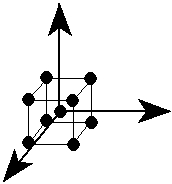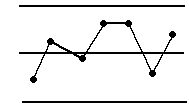
|
Mathews Malnar and
Bailey, Inc.
Quality
engineering,
applied statistical consulting,
and training services for R&D, product, process,
and manufacturing engineering organizations. |

|
An Introduction to
MINITAB
Course Description: This
hands-on course provides an introduction to statistical methods
for quality engineering using MINITAB. Students will learn to
enter and manage their data in MINITAB worksheets, create
graphical displays of their data, perform basic statistical
analyses like confidence intervals, hypothesis tests, ANOVA, and
linear regression, and use special methods like designed
experiments, gage error studies, process capability studies, and
sample size calculations.
Course Format: This
course is usually taught in three four-hour sessions with a
possible fourth session dedicated to specific customer
applications. The course must be taught in a computer lab with one
computer per student.
Course Goals: Upon
completion
of this course students should be able to use MINITAB to:
1. Enter data
into worksheets manually, by copy/paste operations, from Excel
spreadsheets, and from text files.
2. Manipulate data and make simple
calculations.
3. Calculate descriptive statistics for
sample data.
4. Calculate probabilities and inverse
probabilities for common probability distributions.
5. Create and edit basic graphical data
presentations.
6. Construct and interpret normal
probability plots.
7. Construct confidence intervals and
perform simple hypothesis tests for one and two sample location
and variation problems.
8. Perform hypothesis tests for one and two
sample fractions defective.
9. Design and use acceptance sampling plans
for attribute and variable data.
10. Create control charts for defectives,
defects, and measurement data.
11. Fit lines and curves to data and plot them.
12. Use ANOVA to test one- and two-way classification
problems for differences between treatments.
13. Create and analyze two-level factorial designed
experiments.
14. Design gage error studies and analyze their data.
15. Analyze data from process capability studies.
16. Calculate sample sizes for experiments.
17. Create reports including data, statistical
analyses, and graphs.
18. Store work in project and worksheet files.
19. Write and execute simple macros.
Prerequisites:
This course is intended for students who have practical knowledge
of and experience with statistical quality engineering methods but
have no or limited experience with MINITAB. Students should have
successfully completed a short course in basic statistical methods
including:
- Basic graphical data presentation techniques
- Calculation of statistics for location (e.g. the mean)
and variation (e.g. the standard deviation)
- An introduction to attribute probability distributions
for defectives (hypergeometric and binomial) and defects
(Poisson)
- An introduction to the design and operation of acceptance
sampling methods for defects and defectives
- An introduction to the use of the normal distribution to
describe variables data
- An introduction to confidence intervals for population
parameters
- An introduction to hypothesis tests for location and
variation
- An introduction to acceptance sampling for attributes and
variables
- An introduction to SPC control charts for defectives,
defects, and measurement data
- An introduction to linear regression methods
- An introduction to ANOVA
Students are also expected to have basic Microsoft Windows
skills.
Course Outline: Each
section
includes a short presentation and one or more hands-on exercises:
1. Overview
of the MINITAB Environment
2. Data Types and Format
3. Entering and Saving Data
4. Manipulating Data
5. Calculations
6. Descriptive Statistics
7. Graphs
8. Calculating Probabilities
9. Confidence Intervals for Attribute and
Variables Data
10. Tests for Attribute and Variables Data
11. Acceptance Sampling
12. Statistical Process Control
13. Analysis of Variance
14. Linear Regression
15. Design of Experiments
16. Gage Error Studies
17. Process Capability Studies
18. Reliability/Life Test Data Analysis
19. Sample Size and Power Calculations
20. Command Line Operations
21. MINITAB Macros
Return
to MM&B Courses
Return
to
MM&B Home Page



